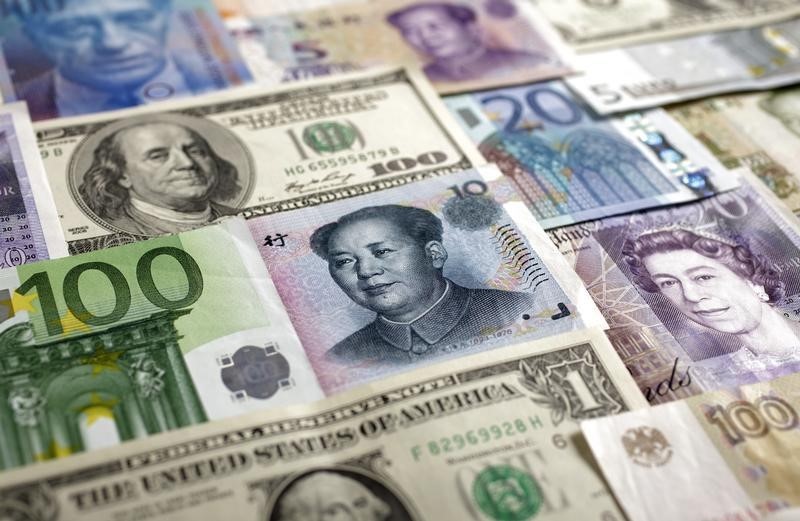By Mike Dolan
LONDON (Reuters) - Of course this time it's different, it always is. But the similarities between today's financial constellation and the backdrop to the emerging market collapses of the late 1990s are haunting developing economies.
As the U.S. dollar soared in recent weeks on expectations of higher U.S. interest rates next year, fuelled by the creation of third of a million American jobs last month, currencies of high growth but slowing emerging economies fell like dominoes.
Russia's rouble had its steepest decline last month since the devaluation and default of 1998. Malaysia's ringgit recorded its biggest two-day fall this month since its version of the crisis the same year, after which it was fixed for seven years.
This re-set of the global financial climate, always associated with an independent and self-sustaining U.S. recovery, normalisation of Federal Reserve interest rates and rising dollar exchange rate, is already in a second phase. The first chill ran through emerging markets in the Spring of 2013 as the Fed mooted the halting of its dollar printing presses.
The big problem for emerging markets facing a protracted squeeze on dollar funding costs is that periods of dollar exchange rate appreciation - rare in the post-1973 floating currency era - typically last five years or more.
That is one reason why it is hard to shake comparisons with the devastating currency runs and financial collapses that ripped through Mexico, Thailand, Indonesia, South Korea, Russia, Brazil, Argentina and beyond between 1995 and 2001 - with the white heat of that crisis coming in 1997-98.
The eerily familiar omens that preceded that episode include steep U.S. Treasury yield spikes in 1994. Ten-year U.S. treasury yields doubled in 2013.
But, more ominously, a 60 percent rise in the dollar's value against the yen in the two years to April 1997 gave a massive competitive boost to Japan that destabilised the then mostly fixed dollar exchange rate pegs across Asia - leading to a tsunami of devaluations and financial ruin for firms who had borrowed heavily in dollars for many years.
The 'Abe-nomics'-inspired 55 percent rise in dollar/yen rate over the past two years is impossible to ignore in that regard.
Outlining his top 10 outside risks for 2015, HSBC chief global economist Stephen King said "severe dollar strength" was a threat - a scenario he said would depress commodity prices even further and put the rouble, South African rand, Mexican peso, Brazilian real and Nigerian naira in the crisis frontline.
RHYME NOT REPEAT
In some ways, it is very different from the 1990s. There are far fewer fixed currency pegs and currency markets are far bigger; trillions of dollars have been built up by emerging economies in hard cash reserve to act as buffers; China has emerged as the world's second biggest economy; and interwoven cross-border supply chains now muddy competitive hits from currency shifts.
What hasn't changed, however, is the scale of dollar borrowing by emerging market companies - much more than their governments - who again locked into a period of low U.S. interest rates and weak dollar as if it was never going to end.
It is this financial vulnerability to sudden and outsize local currency losses that trumps competitiveness gains in the short run at least, making investment hazardous and risking a spiral. The pressure a dollar surge puts on dollar-priced oil and commodities is a further big squeeze on many emerging nations who are big exporters of such raw materials.
This is why economists from global central banking forum the Bank for International Settlements said on Sunday they was so worried about the threat to emerging markets.
"Should the U.S. dollar - the dominant international currency – continue its ascent, this could expose currency and funding mismatches, by raising debt burdens," BIS chief economist Claudio Borio told reporters, stressing that some three quarters of the $2.6 trillion (£1.65 trillion) of outstanding debt securities issued by emerging market entities are denominated in the U.S. currency.
This is the feature that most looks like the roots of the 1990s crises, where heavy overseas borrowing by Thai banks and South Korean conglomerates in the years leading up to the crisis were key catalysts for the storms that followed.
China, which was the latest emerging giant to feel the market heat this week, came in for particular attention as the BIS said total cross-border bank loans to China had more than doubled to $1.1 trillion in just 18 months to June and Chinese have borrowed $360 billion in international debt securities.
"Contrary to prevailing wisdom, any vulnerabilities in China could have significant effects abroad, also through purely financial channels," Borio added.
What is more, BIS analysts warned that cross-border debt issued by emerging market companies may be less stable than it initially appears due to the increasing role of overseas subsidiaries - through which nearly half of firms' international debt, or some $252 billion, was sold in the four years to 2013.

"What the various crises over the past 40 years or so have in common is a currency or maturity mismatch that was accelerated just prior to the onset of the crisis," said Marc Chandler at Brown Brothers Harriman. "It worked until the dollar and U.S. interest rates rose."
(Additional reporting by Sujata Rao, Sam Wilkin; Graphics by Vincent Flasseur and JPMorgan; editing by Philippa Fletcher)